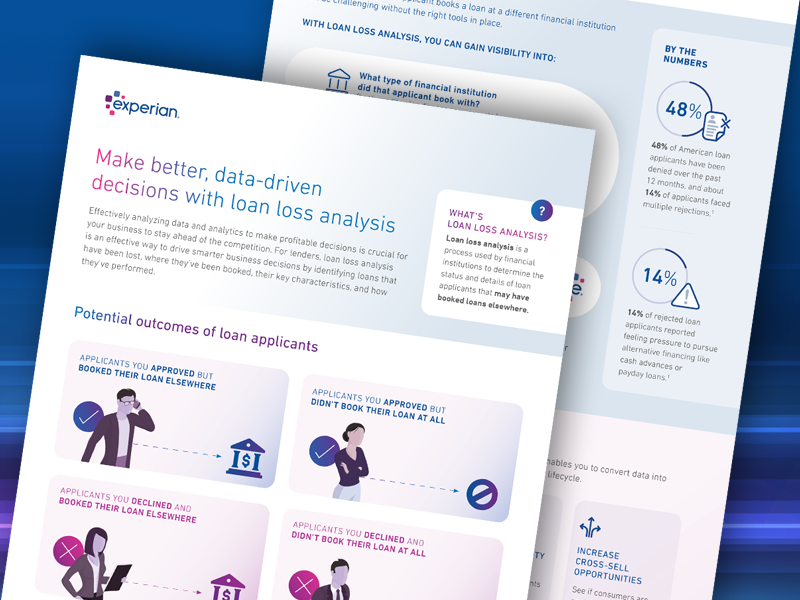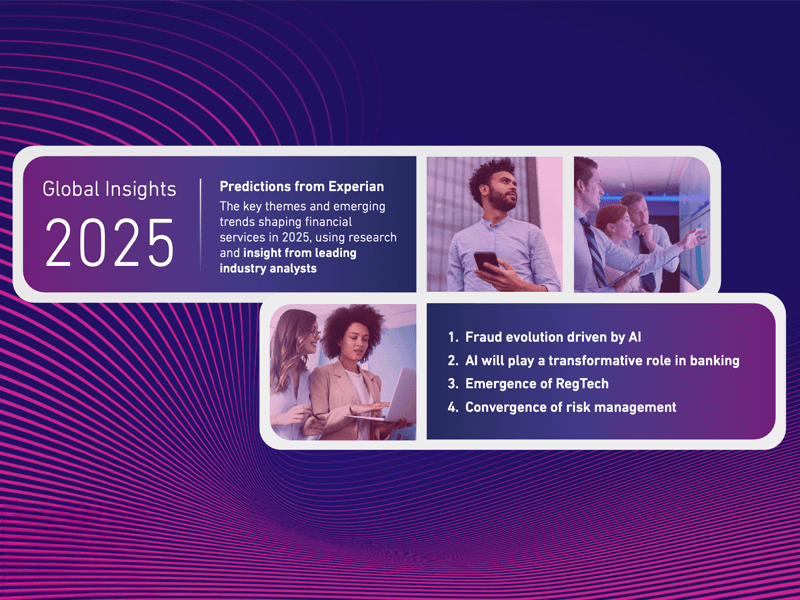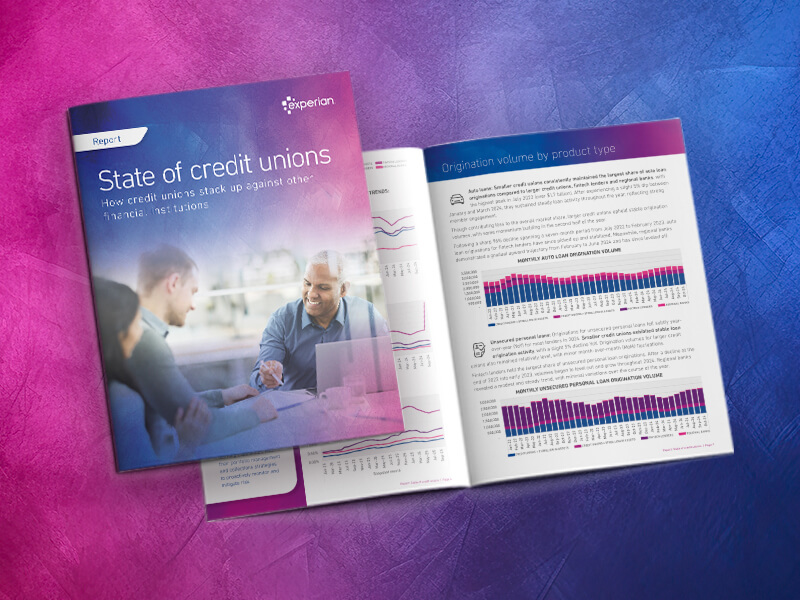
Welcome to the Experian Thought Leadership Hub
Gain insights into the fast-changing world of consumer and business data through our extensive library of resources.
42 resultsPage 1
 Infographic
Infographic
Based on interviews with global financial institutions, the Forrester Total Economic Impact™ study, commissioned by Experian, reveals real customer impact stories and business wins delivered by the Experian Ascend Platform™. This infographic shares some of the key findings.
Key insights include:
 White Paper
White Paper
GenAI isn’t just changing the financial services industry; it’s redefining it. When faced with industry challenges and economic uncertainty, leading financial institutions strategically leverage GenAI to drive business growth and profitability.
Experian’s latest innovation, Experian Assistant, is empowering financial institutions stay ahead of the competition while driving strong business results.
Experian Assistant enables organizations to:
Download our latest white paper to unlock insights into how you can improve internal productivity, serve your customers more effectively and generate revenue.
 Infographic
Infographic
Relying solely on traditional credit scores can leave you with a limited view into consumers’ financial stability.
See how integrating alternative data can help you:
 Infographic
Infographic
Loan loss analysis is an effective way for lending institutions to drive smarter business decisions by identifying loans that have been lost, where they’ve been booked, their key characteristics, and how they’ve performed.
With loan loss analysis, you can gain visibility into:
Accessing this information can help your organization validate your lending policies or find out where you can make adjustments to remain competitive in the market and win more business.
 Report
Report
Key themes and emerging trends shaping financial services in 2025, using research and insight from leading industry analysts. Themes include:
 Report
Report
Experian's State of Credit Unions Report explores data-driven credit trends in the credit union space, with a particular focus on auto loans, unsecured personal loans and unsecured credit cards.
Take a deep dive into: